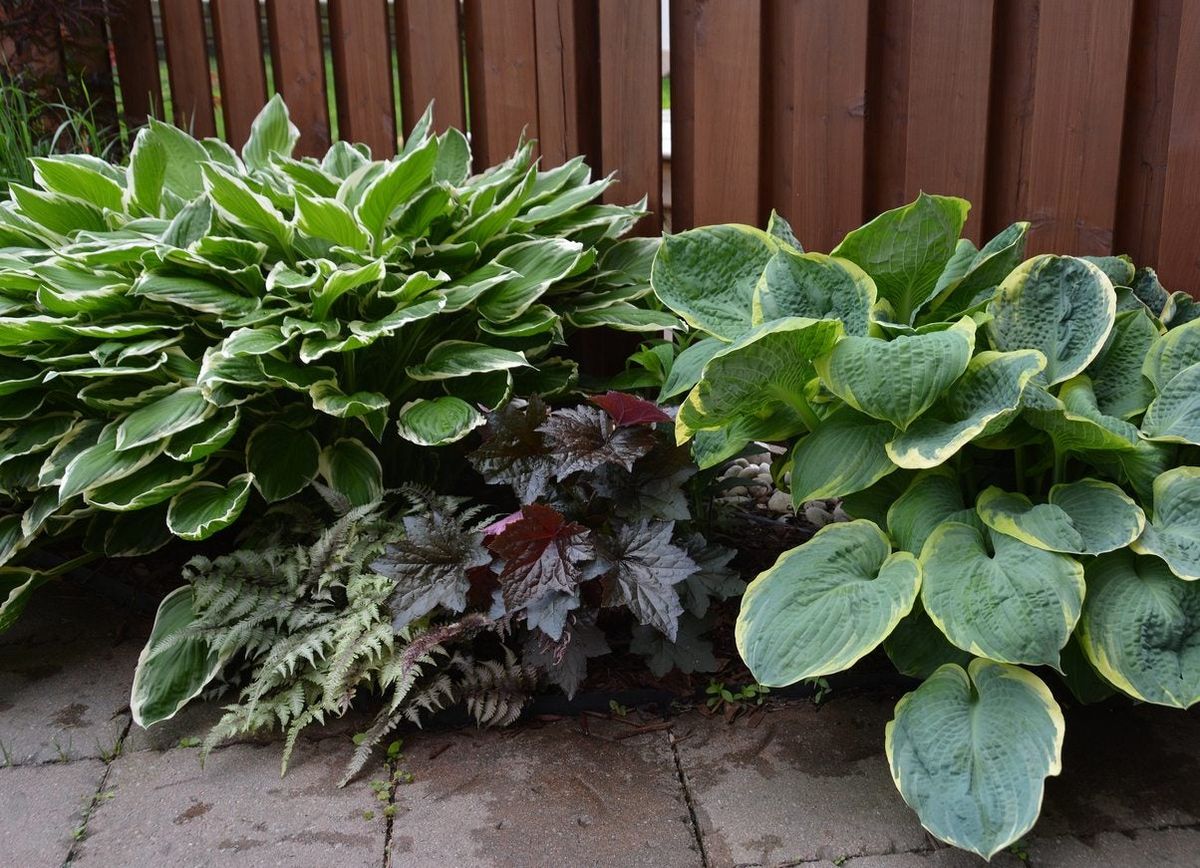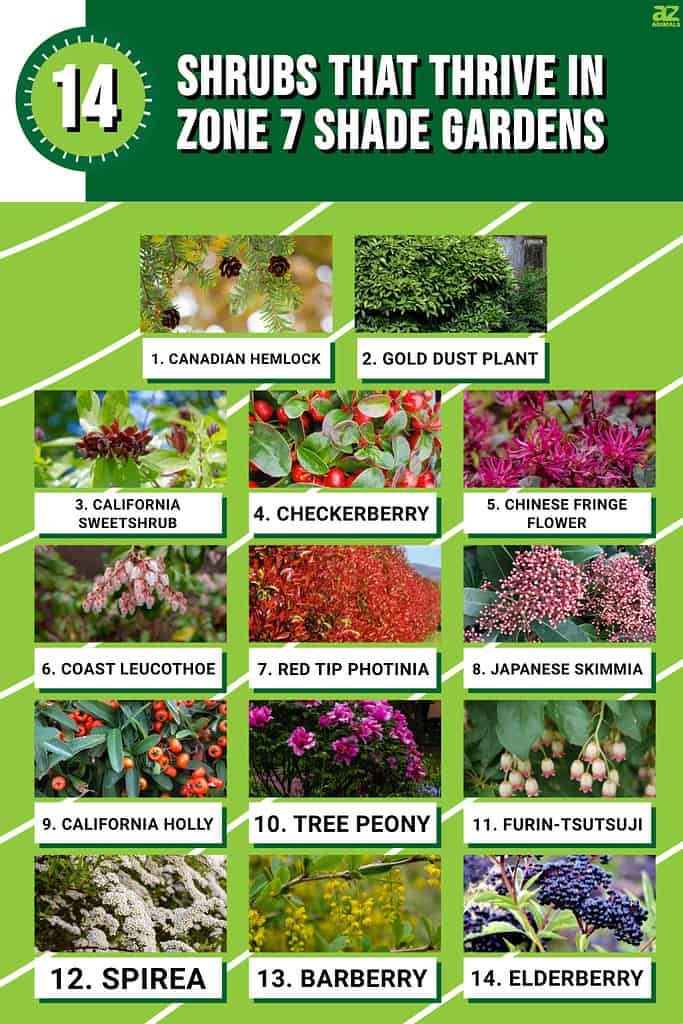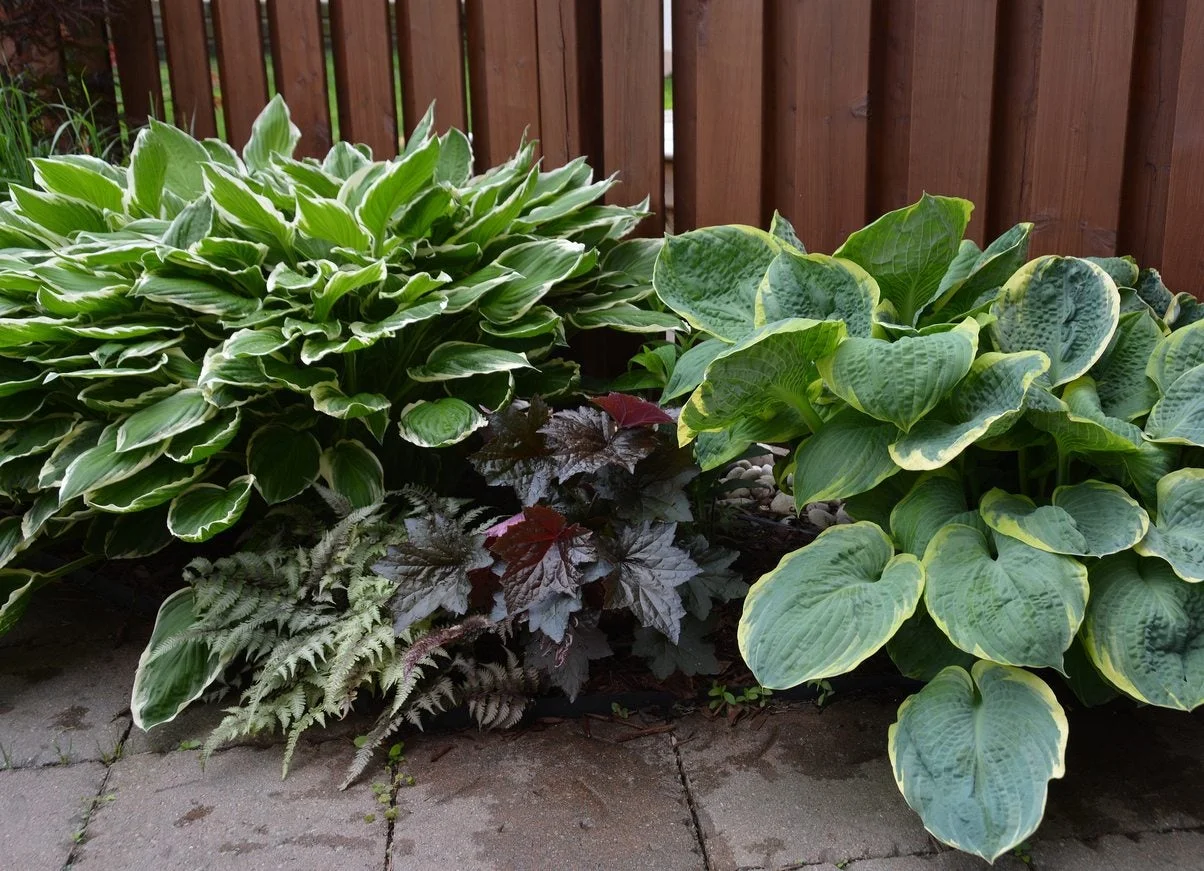Imagine stepping into your garden, where the sun’s rays gently filter through a canopy of leaves, casting a calming shade over a vibrant tapestry of green. If you live in Zone 7, you have the perfect climate to create a stunning shade garden.
You might think that a garden needs full sun to thrive, but shade gardens offer a unique charm that is equally captivating. Picture lush ferns, vibrant hostas, and delicate flowers that thrive away from the harsh sun. Your shade garden could become a serene retreat, a place to unwind and connect with nature.
Are you ready to transform those shady spots into a lush paradise? Let’s explore how you can design a shade garden in Zone 7 that will leave you and your visitors in awe.

Credit: www.americanmeadows.com
JUMP TO TOPIC
Benefits Of Shade Gardens
Shade gardens thrive in Zone 7, offering cool relief during warm months. They support diverse plants like ferns and hostas. These gardens create tranquil spaces, perfect for relaxation and outdoor enjoyment.
Shade gardens in Zone 7 are more than just a lush retreat from the sun; they offer a multitude of benefits that can transform your outdoor space into a haven. Whether you’re a seasoned gardener or a beginner, understanding these benefits can help you make the most out of your garden. Let’s dive into the perks of nurturing a shade garden in your backyard.Cooling Effect
Shade gardens naturally cool your environment. They provide a respite from the intense heat, making your garden a comfortable place to relax during the summer months. Imagine sitting under a canopy of green leaves as the temperature drops by several degrees, creating a perfect spot for outdoor gatherings.Biodiversity Support
Shade gardens are a haven for diverse plant and animal species. By planting a variety of shade-loving plants, you invite birds, insects, and other wildlife to your garden. This not only enhances the beauty of your space but also supports local ecosystems, creating a vibrant, living tapestry right in your backyard.Low Maintenance
If you’re looking to spend more time enjoying your garden rather than working in it, a shade garden might be the answer. These gardens generally require less watering and weeding compared to sunny gardens. With less stress on maintenance, you can focus on the joy of gardening and the serenity it brings to your life. Have you ever considered how a shade garden could change your outdoor experience? Imagine the transformation in your garden and the benefits it could bring. Whether it’s the cooling comfort, the bustling biodiversity, or the ease of care, shade gardens offer something special for everyone. Start planning your own shade oasis today, and reap the rewards in no time.
Credit: www.gardeningknowhow.com
Understanding Zone 7 Climate
Understanding the climate of Zone 7 is essential for shade gardens. This zone has unique characteristics that influence plant growth. Knowing these factors helps create a thriving garden.
Temperature Variations
Zone 7 experiences mild to warm temperatures. Summers are hot, with average highs of 85°F. Winters are cool, but rarely below 0°F. This range supports diverse plant life. Shade plants thrive in these moderate conditions.
Rainfall Patterns
Rainfall in Zone 7 is moderate and consistent. Average annual precipitation is around 40 inches. Spring and fall are particularly wet. This moisture helps shade plants stay lush and vibrant. Regular rainfall supports healthy soil and growth.
Seasonal Changes
Zone 7 has four distinct seasons. Spring brings blossoming flowers and fresh foliage. Summer is warm, perfect for shade-loving plants. Fall colors are vivid with cooler temperatures. Winter is mild, allowing hardy plants to survive. Understanding these changes helps plan your garden effectively.
Ideal Shade Plants For Zone 7
Gardeners in Zone 7 often seek plants that thrive in shade. The region offers mild winters and warm summers, creating a unique environment. Shade gardens can be lush and vibrant with the right selection of plants. Discovering ideal shade plants can transform your garden into a tranquil oasis. Below are top choices for perennials, annuals, and ground covers that thrive in Zone 7.
Perennials
Perennials provide lasting beauty year after year. Hostas are a favorite for shade gardens. Their broad leaves come in various colors and patterns. Ferns also flourish in shady spots, adding texture and depth. Astilbe boasts feathery blooms and thrives in moist soil. Heucheras, with colorful foliage, brighten up any shaded area. Each offers unique attributes to enhance your garden.
Annuals
Annuals add vibrant colors to shaded areas. Impatiens are a popular choice with their bright, cheerful flowers. Begonias offer lush blooms and thrive in partial shade. Torenia, also known as the wishbone flower, can fill your garden with color. Each year, you can change your garden’s look with new annuals. They offer flexibility and stunning seasonal displays.
Ground Covers
Ground covers help to keep weeds at bay. They fill in gaps and add beauty to your garden. Vinca minor, or periwinkle, spreads easily and blooms with delicate flowers. Pachysandra creates a dense carpet of green foliage. Ajuga offers vibrant colors and thrives in shade. These plants cover ground efficiently and maintain garden health. They are low-maintenance and effective.
Designing A Shade Garden
Creating a shade garden in Zone 7 requires selecting plants that thrive in low light. Choose ferns, hostas, and astilbes for vibrant foliage. Incorporate varying textures and colors to craft a visually appealing landscape.
Designing a shade garden in Zone 7 can be a delightful project. The gentle play of shadows offers a serene escape from the sun. Understanding how to design your garden boosts its beauty and functionality. Shade gardens have unique needs, but they provide a lush, green retreat.Layout And Structure
Begin with a clear plan for your garden layout. Consider the natural light and shade patterns. Choose plants that thrive in low-light conditions. Think about where each plant will go. Create a balanced look with varied plant heights. Use taller plants as a backdrop. Position shorter ones in the foreground. This adds depth and visual interest.Pathways And Borders
Pathways guide visitors through your garden. They create a flow and sense of exploration. Use materials like gravel, stepping stones, or mulch. These materials blend well with the natural setting. Borders define the garden’s edges. They keep the design neat and organized. Low-growing plants or decorative stones work well as borders. They add structure without overwhelming the space.Layering Techniques
Layering plants adds dimension to your garden. Start with tall trees or shrubs. These provide a canopy for shade. Underneath, plant medium-sized shrubs or perennials. Fill in gaps with ground covers or ferns. This technique mimics nature’s own design. It creates a lush, full appearance. Layering also helps conserve moisture in the soil. This is ideal for shade-loving plants in Zone 7.Maintenance Tips
Caring for shade gardens in Zone 7 involves regular watering to prevent dryness. Mulching helps retain moisture and suppress weeds. Pruning and removing dead leaves enhance plant health and appearance.
Maintaining a shade garden in Zone 7 can be both rewarding and challenging. While you enjoy the lush beauty and tranquil atmosphere, you might also face unique care requirements. Your shade garden needs attention to thrive, and understanding the essentials can make all the difference. Discover effective strategies for watering, pest management, and fertilization to keep your shade garden vibrant.Watering Strategies
Watering a shade garden requires a balance. Since shade reduces evaporation, overwatering can lead to root rot. You should check the soil moisture regularly. Stick your finger into the soil; if it feels dry an inch down, it’s time to water. Consider using a soaker hose for deep watering. This method ensures the roots get enough moisture without drowning the plants. Early morning watering is ideal, allowing foliage to dry during the day, preventing fungal issues. Have you ever noticed how your plants perk up after a refreshing morning drink?Pest Management
Shade gardens can be a haven for pests like slugs and snails. They love the damp environment. Hand-picking these pests might seem tedious, but it’s effective. Imagine the satisfaction of removing them before they wreak havoc. Use organic pest control methods such as diatomaceous earth around your plants. It’s safe for your garden but deadly for pests. Encourage beneficial insects like ladybugs and lacewings to help control aphid populations. Have you tried introducing these tiny warriors to your garden?Fertilization Practices
Shade-loving plants have specific nutrient needs. A balanced, slow-release fertilizer works well. Apply it in early spring to give your plants a healthy start. This simple step can make your garden flourish. Liquid fertilizers can offer a quick boost during the growing season. Just be careful not to over-fertilize, which can lead to lush foliage but weak flowers. Have you ever marveled at the lush growth after a well-timed fertilizer application? Maintaining a shade garden in Zone 7 involves thoughtful care. With the right strategies, you can enjoy a thriving garden that offers a peaceful retreat. How do you plan to enhance your shade garden’s beauty this season?Incorporating Wildlife
Creating a haven for wildlife in shade gardens of Zone 7 can enhance biodiversity. Native plants provide shelter and food, attracting birds and butterflies. With the right choices, even shaded areas become lively ecosystems.
Incorporating wildlife in your shade garden can create a vibrant ecosystem. It brings life and movement to your outdoor space. Zone 7 offers a rich environment for attracting various creatures. These include pollinators, birds, and beneficial insects. Let’s explore how to make your shade garden a haven for wildlife.Attracting Pollinators
Pollinators like bees and butterflies love shaded areas. They are crucial for plant reproduction. Planting native wildflowers can draw them to your garden. Choose flowers that bloom at different times. This ensures a constant food source. Shade-loving plants like hostas and ferns can be great choices. They provide both nectar and shelter.Creating Habitats
Wildlife needs safe places to live and breed. Shade gardens can offer that. Use logs, rocks, and leaf piles to create habitats. These are perfect for small mammals and insects. Consider installing birdhouses or bat boxes. These provide nesting sites and attract more wildlife. Dense shrubs also offer protection from predators.Sustainable Practices
Sustainable practices help maintain a healthy garden. Avoid using chemical pesticides. They can harm beneficial insects and pollinators. Use organic alternatives instead. Collect rainwater for irrigation. This conserves water and supports local wildlife. Composting is another great practice. It enriches the soil and reduces waste. Sustainable methods make your garden thrive naturally.Seasonal Color And Texture
Shade gardens in Zone 7 offer a unique palette of colors and textures. With each season, these gardens transform beautifully. They offer vibrant blooms, lush foliage, and rich fall hues. Understanding seasonal changes helps you plan your garden effectively.
Spring Blooms
Spring breathes life into the shade garden. Plants like Bleeding Hearts and Hellebores emerge with delicate flowers. Their colors range from soft pinks to deep reds. Ferns unfurl their fronds, adding a fresh, green backdrop. Hostas also start their journey, with leaves that promise to grow bolder.
Summer Foliage
Summer brings a lush look to the garden. Hostas now display their full, striking leaves. They offer a variety of greens and blues. Coral Bells add texture with their ruffled leaves. Their tiny flowers on tall stalks provide a subtle contrast. Japanese Painted Ferns introduce a silvery shimmer to shaded spots.
Fall Highlights
Fall transforms the shade garden into a tapestry of warm tones. Foliage takes on hues of gold, copper, and burgundy. Plants like Oakleaf Hydrangea offer brilliant red leaves. Autumn Ferns add a rusty orange to the mix. The garden becomes a peaceful retreat, rich in color and texture.

Credit: a-z-animals.com
Frequently Asked Questions
What Are The Best Plants For Shade Gardens In Zone 7?
In Zone 7, hostas, ferns, and astilbes thrive well in shade gardens. These plants are perfect for shaded areas due to their preference for indirect sunlight. Additionally, impatiens and bleeding hearts add vibrant colors. Choose native plants for better adaptability and minimal maintenance.
How Do I Prepare Soil For A Shade Garden?
Start by removing debris and weeds from the area. Enrich the soil with organic matter like compost to improve drainage and nutrient content. Ensure the soil pH is suitable for the plants chosen. Regularly check for compacted soil and aerate as needed for optimal plant growth.
Can I Grow Vegetables In A Shade Garden?
Yes, you can grow shade-tolerant vegetables like lettuce, spinach, and kale. These vegetables require less sunlight and can thrive under partial shade. However, yield might be lower compared to full sun gardens. Regularly monitor for pests and ensure soil is nutrient-rich to support growth.
How Often Should I Water Shade Garden Plants?
Shade garden plants generally require less frequent watering than sun-loving plants. Water deeply once a week, ensuring the soil remains consistently moist but not waterlogged. Adjust watering frequency based on weather conditions and specific plant needs. Monitor the soil moisture to prevent overwatering.
Conclusion
Creating a shade garden in Zone 7 offers endless possibilities. Choose plants that thrive in low light. Hostas, ferns, and astilbes are excellent choices. They bring beauty and texture to your garden. Regularly water and care for your plants. This ensures healthy growth.
Remember to mulch to retain moisture. Enjoy the peace and beauty of your shaded retreat. With the right plants, your garden will flourish. It becomes a sanctuary in your backyard. Start your shade garden today. Embrace the calm and coolness it brings.
Happy gardening!

